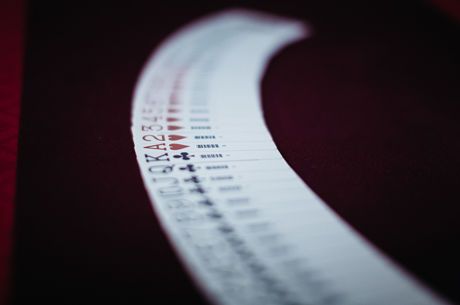The Dangers of Trying to 'Protect' Your Hand

Many times in no-limit hold'em, we would like to protect our hand in a situation in which it is impossible to do so.
Often when the threats to our hand are more obvious, the ability to protect our hand is less likely possible. For example, when we are playing from out of position, there will be times when we simply cannot prevent the turn or the river from arriving.
One strategy to help avoid the worse outcomes of this affliction can be to view some "made" hands as in fact weak, rather than looking at them as strong but vulnerable. Here's a hand of played online at the 100NL ($0.50/$1) six-handed tables that helps illustrate this idea.
Calling a Three-Bet, Then Check-Raising the Flop
A regular with a stack of about $133 opened to $3 from under the gun. The cutoff three-bet to $9, and when it folded back around the UTG player called.
Just looking at the action so far, there are at a few factors pointing to the UTG regular being strong to continue in this way. One, of course, is opening from under the gun. Another is calling the three-bet from out of position as opposed to folding or potentially four-betting. The UTG player also appears unlikely to want to get all in before the flop with hands as strong as Q-Q or A-K in this situation.
The flop was highly coordinated, coming 6♦4♦3♦ to present plenty of hazards to plenty of hands. The under the gun player checked, and the cutoff bet a rather small $5.50. The UTG player then check-raised to $16.
You Can't Stop What's Coming
If you are under the gun on this flop in this situation, which hand would you rather have — K♠K♣ or A♦Q♠?
Were I check-raising, I would probably opt for the latter. While K♠K♣ is a slight favorite in a heads-up matchup with A♦Q♠ on this board, the latter is going to do much better, equity-wise, as the pot size increases.
With A♦Q♠, you have an easier time deciding what actions to take on later streets. If a diamond comes, A♦Q♠ knows where it stands, and when it does not improve, the same is true. A queen is the only tricky card, while an ace is often going to be good.
Since A♦Q♠ blocks the ace-high flush on the flop, it has the option to bet turn and shove river having check-raised the flop as a bluff. This situation, in other words, is its oyster.
On the other hand, as the pot gets larger, K♠K♣ is going to run into similar high pairs, more often with a diamond, and flushes. Notice that in that case there would only one combination of A-K-offsuit that includes the ace of diamonds (A♦K♥), so protecting against this hand, though it is a likely hand to three-bet before the flop, should not be of much consideration. A-K with the king of diamonds has four combinations, but the cutoff is unlikely to be able to play these as aggressively.
Brick, Brick
The check-raise was called and the turn was the 8♠. Under the gun then fired $29, continuing to put heat on the cutoff. The cutoff called in position.
For all intents and purposes, this turn card was the biggest brick in the deck. It completed no straights, no flushes, and as for sets, pocket eights is one of the least likely pocket pairs either player could hold in this situation. By just calling this rather sizeable bet, the player in position is indicating he's not going anywhere — his range is strong.
One good brick deserves another, and the river brought the 8♥, making the completed board 6♦4♦3♦8♠8♥. With that, the UTG player moved all in with the almost $80 he had behind holding Q♠Q♣.
One wonders what precisely the UTG player expected to happen. He had protected his range so much that indeed only better hands were likely to call on the river, and the A♦5♦ the cutoff snapped him off with certainly was one of those.
Touching a Hot Stove
Winning the pot is not the same as winning money. There will be situations in poker where you could do the former more often, but lose more of the latter.
This hand is one such case — the price to win the pot more often is too high. The lower cost route allows the villain to realize his equity, but if his range has more equity to begin with, it is the better bargain on the table.









